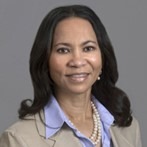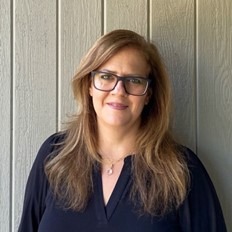Reimagining the workplace offers opportunity for inclusion
Women leaders in comms share their view of what’s needed to shrink the achievement gap and what female leadership has meant for them personally.

For Women’s History Month, the PR industry is taking a closer look at the role women play in leadership across organizations.
It’s a point that has been driven home over the course of the COVID-19 crisis, as women have dropped out of the workforce at a higher rate than men, a trend that threatens to erase decades of gains for women participation in the workplace. What was already an achievement gap or a “glass ceiling” for women has only been exacerbated by WFH, loss of childcare and school closings.
However, many see this as an exciting time for women in a profession that has never been more appreciated in the organizational structure.

Holly Wheeler
“It’s such an exciting time in women’s leadership in comms and marketing,” says Holly Wheeler, vice president of global brand marketing for Wrangler. “The industry is going through so much disruption and with that comes opportunity. Those who are motivated and excited by opportunity will thrive.”
Closing the gap
It’s hard to ignore an achievement gap for women in PR, where they dominate the profession with 70% of the industry workforce, especially at the lower levels. However, those numbers aren’t reflected in the leadership of many top PR agencies and roles across industries.
“We’re seeing more women rise to the top leadership seat as chief communications officer, but there is room to grow,” says Tabrina Davis, vice president of marketing and communications at Methodist Le Bonheur Healthcare. “Even larger strides need to be made when it comes to leadership opportunities for women of color.”

Tabrina Davis
It’s a problem that has to be addressed at every level of an organization, argues Juan Meng, associate professor of advertising and public relations at the University of Georgia.
“Gender inclusion, and also the racial diversity, should be considered and built into all phases of talent management,” she says, not just for young, entry-level pros. “It’s not just for the beginning levels that we should focus on the racial and gender diversity and inclusion, but all the way through the leadership pipeline from the junior to the mid-level, to senior.”

Juan Meng
This focus on intersectional inclusion across all levels of an organization is one of the big takeaways form her new book, co-authored with Marlene S. Neill, “PR Women with Influence: Breaking Through the Ethical and Leadership Challenges.”
Other takeaways include the need for leadership training programs for women in the workplace, but programs that produce real results. Meng says that women she interviewed in the 31-40 age range reported that they had participated in many programs that had not translated into influence or leadership roles within their organizations.
Organizations should also take a close look at the pay gap, where blatant disparity can undercut their reputations and destroy employee morale.
“The gender pay gap is a huge issue in our field that cannot be ignored,” says Valarie De La Garza, CEO of Fenton Communications. “In order for our companies, and frankly our field, to offer counsel to our clients that is relevant to today’s communications needs, the sector must advance more female leaders and pay them their true worth.”

Valarie De La Garza
[Hear more about the role of women leaders in a post-COVID world by joining our free webinar with Tabrina Davis and others to discuss their experiences and advice for a communications career, March 19 at 12 p.m., Eastern.]
The impact of COVID-19
COVID-19 has been an unmitigated disaster for women in the workplace.
More than two in three men (68%) in the workforce today say they are working full time compared to only half of women (49%) according to new research from Affect. Two in five women (40%) and more than half (53%) of working moms—said they make less money now than they did before the pandemic.

Sandra Fathi
“The pandemic has wreaked havoc in the lives and livelihoods of many Americans, but women have been particularly strained over the last year, especially working mothers,” said Sandra Fathi, president of Affect. “Considering that women were already in a position where they experienced inequity across so many facets of the workplace, we need to take immediate steps to stop that gap from widening even further by offering the flexibility, support and growth opportunities that women desperately need in the workplace right now to ensure their success both at work and at home, and not be in a position of sacrificing one for the other.”
How colleagues can be supportive
So, what does that support look like?
“Women should be treated with the same respect as their male counterparts,” says Dara A. Busch, 5WPR president, consumer practice. “They’ve worked just as hard, if not harder, to get where they are, and are not seeking anything other than their fair place at the table.”
Colleagues who want to support women can leverage their voices within the organization to make sure that others are heard.

Dara Busch
“One of the best things you can do is to amplify the ideas of your female colleagues and make sure they get the credit,” says Mandy Menaker, global head of PR for ClassPass.
She offers a handy line that colleagues can use:
“This wonderful idea that [NAME] proposed may work well here. Can we explore it?”
You can also help offer women their own platform with lines like:
“I’d love to know [NAME’s] perspective – what do you think?”
Menaker says that support could be as simple as making sure female colleagues are invited to the meeting or present in the room. “These moments encourage women to share their insight and help them to recognize that their perspective is valued,” she says. “It also ensures they are top of mind when big projects are being assigned and promotions are considered.”

Mandy Menaker
Wrangler’s Wheeler also has recommendations for top leaders to make the workplace a better place for women in 2021.
“Recognize the need for flexibility, the workday hasn’t been 9-5 for a long time,” she says. “Having flexibility in the hours that the work gets done and even where people are working from, is important in building trust with employees.”
Davis puts it another way: “Setting up future leaders for success means supporting their personal lives as well. Many of us are caregivers and raising families. We shouldn’t have to choose between advancing our careers or caring for our family.”
Tiffany Guarnaccia, president and founder of Kite Hill PR, agrees.

Tiffany Guarnaccia
“We must create new opportunities and help women, in particular working mothers, realize their career ambitions. Agency leaders must also develop new work policies that are flexible and that can be customized based on individual employees.”
Wheeler also says leaders must encourage women to take their PTO and have a dedicated effort to drive female mentorship across the organization.
“While I grew up in agency account management, I always recognized the partnership that I had in my media, strategy and creative partners,” Wheeler says of her own career and mentors who helped her succeed. “It helps build perspective and also gets you more familiar with the various KPIs we are all measured on.”
Mentorship
Meng says that her research shows that, in general, women place a lot of value in mentor/mentee relationships.
However, only 10% of women in her research said they were able to have successful mentee/mentor interactions through the programs offered by their organizations. Meng says the data clearly shows that the industry isn’t doing enough through internal communications to support women on their career journey.
Meng said one of the key reasons for a mentorship program to fail to succeed is for workers to be so overloaded with tasks that they don’t have time to reflect on past work and try to glean lessons from recent accomplishments or failures. “The mentor-mentee relationship is about learning, reflecting on the different situations and your own experience,” she says. “So when you are busy with multiple assignments, multiple tasks or team projects or client work, it’s harder to really get nurtured.”
Industry leaders also see the value of mentorship for closing the gender gap. “I’m a big believer in mentorship,” says De La Garza. “I am both a recipient and contributor of counsel, honesty and advocacy.”
Mentors can also help pass along opportunities for recognition.
“I’d encourage people to look for opportunities to celebrate colleagues who are unlikely to directly apply for awards and recognition,” says Menaker. “For example, I recently received information in my inbox about a content-marketing award. While it wasn’t relevant to my current scope of work, it was the perfect opportunity to highlight another woman at ClassPass and even more so when she became a finalist and we could brag about her accomplishment to the full team!”
Advice for the next generation
Here’s some of the advice today’s women leaders have for the next generation of PR trailblazers:
1. Confront challenges as opportunities.
“Face any roadblock as a chance to grow rather than a setback,” says Kite Hill PR’s Guarnaccia. “By embodying this mindset, I have had many chances to grow in my own professional journey. Early on in my career, there were ample times where I was the only female in the room with senior leadership. I learned at a young age that if there is not a seat specifically reserved for you at the table, it is up to you to make one.”
“Sometimes the most painful experiences are the best opportunities to grow,” agrees Fenton Communications’ De La Garza. “When you are facing a particularly hard situation in your career, challenge yourself to be open to learning the lesson at hand. The takeaways from navigating the toughest career challenges will bolster you along your journey.”
2. Polish your writing skills.
“Exceptional writing skills are a must and the price of admission,” says Methodist Le Bonheur Healthcare’s Davis. “Be well versed in all aspects of communications as well as the industry you serve. Our industry is dynamic. Never stop looking for opportunities to learn and make yourself marketable.”
3. Ask plenty of questions.
“The PR industry is constantly growing and evolving, and so are you,” says 5WPR’s Busch. “Take every opportunity to learn from your colleagues and your leaders, both women and men. Ask questions, take on different tasks and positions, and always work towards the goal of becoming more knowledgeable in your field. If you’re always learning, you’ll be ready for anything the industry tries to throw at you.”
4. Don’t be afraid to seek help.
“My career in PR started when I worked in a marketing department with no advertising budget and had to get creative about how to build a buzz,” says ClassPass’s Menaker.
“Absent of any formal training in public relations or time working in an agency, I relied on intuition and Google to sneak by and hoped no one would discover my secret that I was figuring it out along the way. Around year two, I finally worked up the courage to invite another PR professional to coffee and ask questions about improving my strategy and pitches. I was astonished at how generous that person was with their time and advice, and I’ve since learned that so many people in the PR industry would love to help, if you just ask.”
5. Take charge of your own destiny.
“I like to remind those just starting on their professional journey that they are in charge of their own destiny,” says Guarnaccia. “Too often, young professionals feel limited by their official title and don’t allow themselves to ‘think outside of the box.’ I aim to actively encourage my team to make their voices heard and manage up beyond their basic responsibilities.”
6. Know the business from back to front.
Davis puts it as a simple question: “At the end of the day, how are you delivering value by helping the organization meet its business goals?”
“Lean into learning the business you are in,” says Wrangler’s Wheeler. “Understand how your company or client’s company makes money.”
That means knowing what the volume/profit drivers are versus what the smaller initiatives are that sometimes have a higher profile, “but when push comes to shove, shouldn’t be eating massive amounts of energy or resources.”
7. Keep a record of your wins.
Wheeler’s last piece of advice: “Document your accomplishments. Do not be afraid to talk about those accomplishments with your manager. Let them know you understand your value and you will be focused on tracking and monitoring how that is rewarded.”
Join Ragan’s free webinar “The Role of Women Leaders in a Post-Pandemic World” to hear from Tabrina Davis, and other top women in the comms industry in a panel discussion with Ragan’s CEO Diane Schwartz March 19 at 12 p.m., Eastern.







